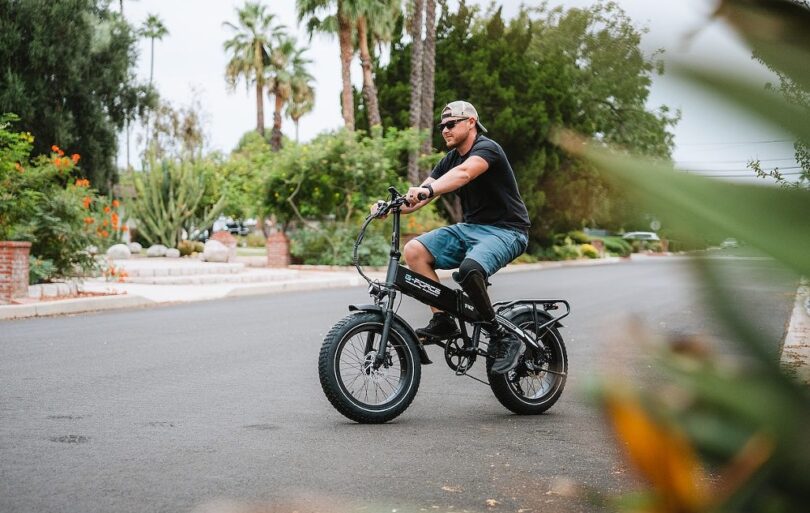With electric bikes gaining popularity all around the world, more and more manufacturers are rolling out bikes with insane levels of power outputs. Nowadays, you can easily find electric bikes with power numbers as high as 500W, 750W or even 1000W. In case you’re wondering how fast does a 1000w electric bike go, just read on.
How Fast Does a 1000W Electric Bike Go?
If you want a short answer, a 1000W electric bike can go as fast as 35mph (56km/h) in the ideal-case scenario (perfect loading, terrain, and winds conditions) – assuming that it’s not restricted to comply with local or state speed regulations.
For instance, take the example of the Engine Pro. It’s a powerful folding fat tire electric bike from Engwe with a 1000W peak output and can easily hit over 30mph when unrestricted.
However, you must keep in mind that the speed of an electric bike depends on a lot of factors besides its motor output. For instance, assuming everything else is constant, an electric bike can cruise at a far greater speed on descents or flat terrains than on inclines.
Likewise, the payload on the bike (that includes both the bike’s and the rider’s weight) also impacts the final speed output. The more payload an electric bike has, the slower it will go.
The peak speed also depends on how hard or fast you pedal your electric bike. Moreover, it is also impacted by the number of speeds an electric bike has. An 8 or 9-speed electric bike would be able to go much faster than a 6 or 7-speed bike.
Another important factor can be the speed settings and riding mode of your electric bike. For instance, most electric bikes cannot hit their peak speed on the throttle or pure electric mode, and can only do so when you’re riding at the highest level of the pedal assist mode.
The biggest restraint, however (as we mentioned before) could be the default speed restriction imposed by the manufacturer to comply with the speed regulations imposed by state or local authorities.
For instance, in Europe, electric bikes cannot exceed a maximum continuous power output of 250W and a top speed of 25km/h (15.5mph). If they go beyond that, they’re classified as ‘motor vehicles’ or ‘mopeds’ and require licensing and registration.
Likewise, the US states follow a 3-tier classification system, restricting the nominal motor output to 750W and top speed as follows:
- Class 1: These electric bikes can have a top speed of 20mph (32km/h) on pedal-assist and cannot have throttle.
- Class 2: These bikes can have the same 20mph (32km/h) top speed but they can have throttle, in addition to pedal-assist.
- Class 3: These can have a pedal-assisted top speed of 28mph (45km/h) but cannot have throttle, like Class 1 bikes.
We hope this article answered your question and was an informative read for you!








